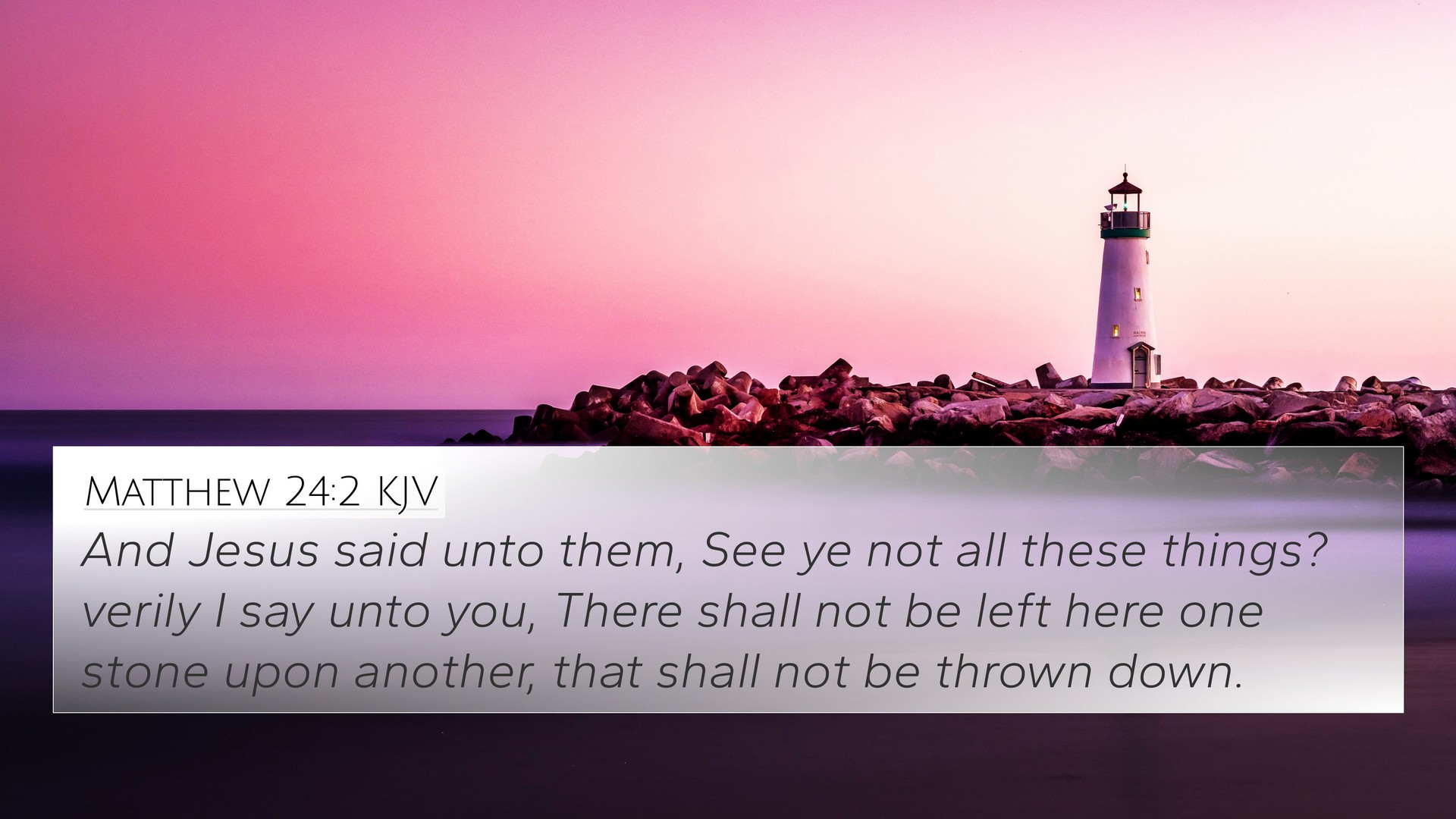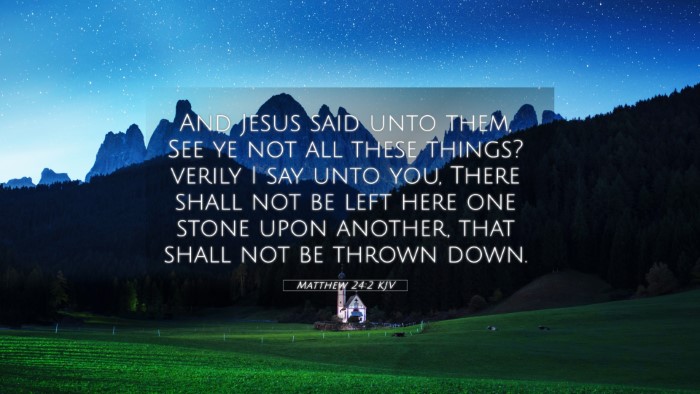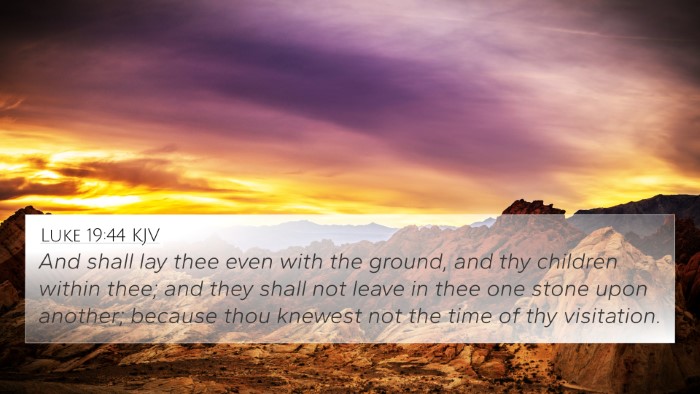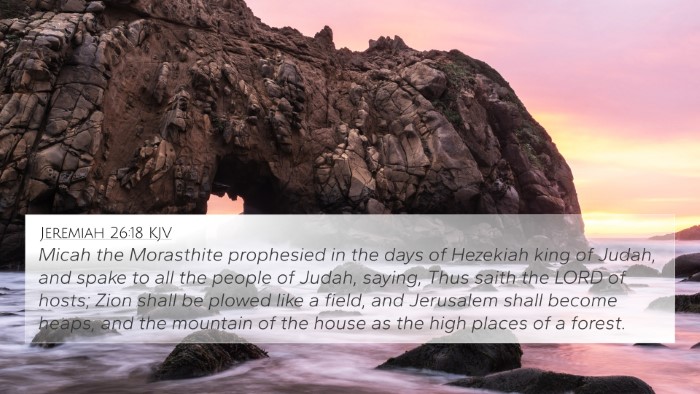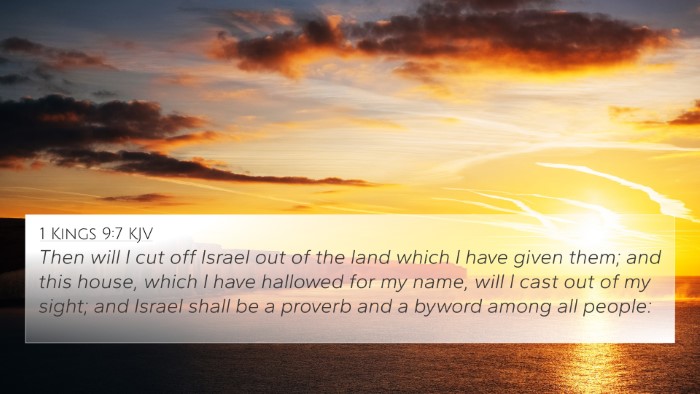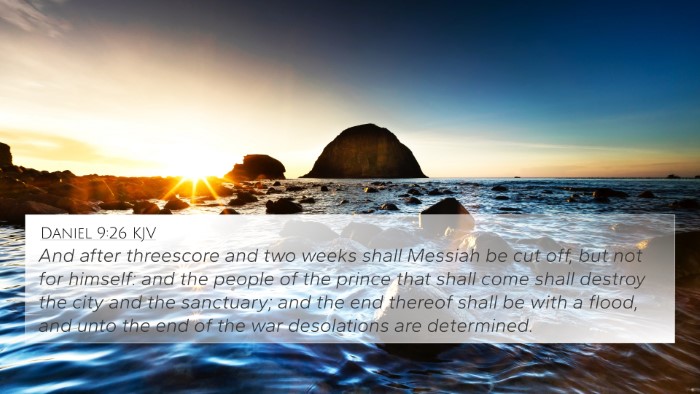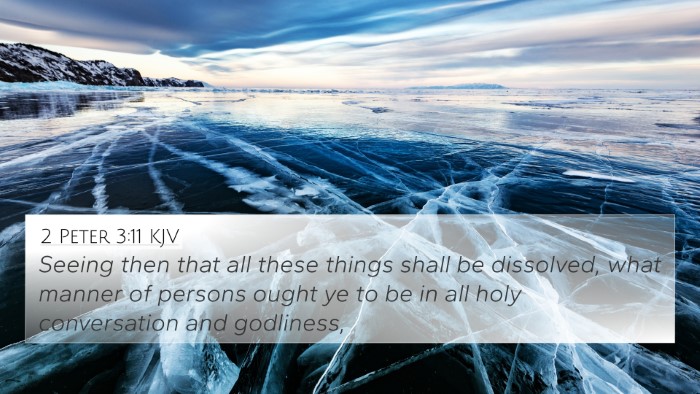Understanding Matthew 24:2
Bible Verse: Matthew 24:2
"But he answered and said unto them, See ye not all these things? Verily I say unto you, There shall not be left here one stone upon another, that shall not be thrown down."
Summary and Interpretation
Matthew 24:2 depicts Jesus’ prophetic declaration regarding the destruction of the Temple in Jerusalem. As He speaks, His disciples marvel at the grandeur of the Temple, but Jesus’ response highlights the impermanence of earthly structures.
Commentary Insights
-
Matthew Henry:
Henry reflects on the astonishment of the disciples regarding the magnificence of the Temple. His commentary indicates that the disciples were caught in the allure of the physical structure, while Jesus was concerned with the spiritual implications of their attachment to it.
-
Albert Barnes:
Barnes emphasizes the prophetic nature of Jesus' statement, suggesting that this prophecy serves as a warning about the consequences of a faith grounded solely in materialism. He notes that the Temple's eventual destruction signified a shift toward a new understanding of worship that transcends physical locations.
-
Adam Clarke:
Clarke elaborates on the historical context of Jerusalem and the Temple, mentioning that the warnings given by Jesus were significant not only for the disciples but for the Jewish people at large. He underscores that this prophecy was fulfilled in A.D. 70 with the Roman siege of Jerusalem.
Cross-References
This verse connects with various scriptures throughout the Bible that enrich its meaning:
- Luke 21:6: “As for these things which ye behold, the days will come, in the which there shall not be left one stone upon another, that shall not be thrown down.”
- Mark 13:2: “And Jesus answering said unto him, Seest thou these great buildings? there shall not be left one stone upon another, that shall not be thrown down.”
- Jeremiah 7:14: “Therefore will I do unto this house, which is called by my name, wherein ye trust, and unto the place which I gave to you and to your fathers, as I have done to Shiloh.”
- Matthew 23:38: “Behold, your house is left unto you desolate.”
- 1 Peter 2:5: “Ye also, as lively stones, are built up a spiritual house, an holy priesthood, to offer up spiritual sacrifices, acceptable to God by Jesus Christ.”
- Acts 7:48-50: “Howbeit the most High dwelleth not in temples made with hands; as saith the prophet…”
- Hebrews 9:11: “But Christ being come an high priest of good things to come, by a greater and more perfect tabernacle, not made with hands…”
Thematic Connections
This verse represents a crucial transition from the Old Covenant, centered around physical temples and rituals, to a New Covenant that emphasizes spiritual identity and relationship with God through Christ.
Links to Important Biblical Themes
- Destruction and Judgment: The theme of judgment for unfaithfulness is prevalent as the destruction of the Temple symbolizes God's displeasure.
- Spiritual Worship: The shift from physical to spiritual worship, highlighting God's presence in hearts rather than in man-made buildings.
- Prophetic Fulfillment: This verse serves as a testament to fulfilled prophecy, as the destruction of Jerusalem was a significant historical event for the early church.
Practical Applications
For believers today, this verse serves several applications:
- Perspective on Materialism: Encouragement to focus on spiritual rather than material possessions.
- Awareness of Prophetic Truth: Understanding and recognizing the fulfillment of Jesus' prophecies strengthens faith.
- Encouraging Spiritual Growth: Seeking a deeper relationship with God beyond traditional places of worship.
Tools for Studying Cross-References
To explore the connections and themes within the Bible, consider these tools:
- Bible Concordance: A comprehensive tool for finding Bible verses and their references.
- Bible Cross-Reference Guide: A helpful resource for identifying related passages.
- Cross-Reference Bible Study: Methods to systematically explore scriptural relationships.
- Bible Reference Resources: Various materials can enhance understanding of biblical themes.
Conclusion
The significance of Matthew 24:2 extends beyond Jesus’ words to His followers; it invites all believers to look deeper into the spiritual essence of their faith. By engaging in cross-referencing related scriptures, individuals can gain a more profound understanding of Biblical truths and their implications in present-day faith.
